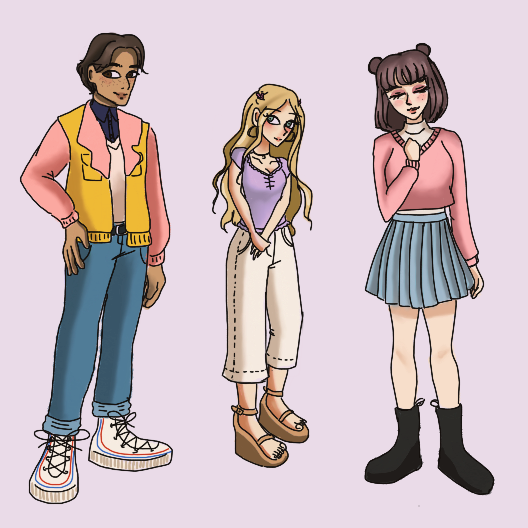Lauren Luna
Contributing Writer
“Fast fashion” has been around since the beginning of mass-produced retail. Coming off the runways and straight onto sale racks, fast fashion seems like a great deal on stylish clothes at face value.
Brands like Zara, H&M, and Topshop profit off consumers’ desire to maintain an updated wardrobe, and even online stores like Fashion Nova, Boohoo, and Princess Polly have captured the public eye.
Lately, fast fashion has become a heated debate topic amongst the public. It’s no secret that the materials used in cheaper clothes are less durable than their pricier counterparts.
As cheap fabrics wear down over time, they eventually need to be replaced. So, big companies get more money in their pockets, and buyers get a new tank top that unravels within five washes.
People have also raised ethical concerns over fast fashion, particularly in how they source their labor. As brands crank out new designs by the minute, they employ a relentless work force to meet the consumers’ demand.
But, the conditions in which companies sustain this labor are questionable. Some fast fashion brands have even employed workers for 14 – 16 hour shifts a day for seven days a week.
More and more people are beginning to recognize the problems with this phenomenon. For example, fast-fashion-giant Forever 21 filed for bankruptcy protection this September.
Some attribute this uncanny demise to Forever 21’s lack of touch with younger customers. As people become more aware of the social and environmental consequences of their decisions, they move onto new frontiers.
Sustainable clothing, unlike fast fashion, sells classic, well=made pieces in smaller waves. While sustainable clothing seems like a simple fix to the fast fashion problem initially, it comes with a series of implications for its buyers.
Because sustainable fashion spends more on materials and labor, they hike up their prices to keep up with resource costs. One short dress from Reformation, an L.A.-based sustainable brand, may cost up to $218.
Many millennial and Generation Z buyers have turned to sustainable brands. But, many within this age group lack the funds for this retail.
Some argue that the sustainable clothing movement compels people to spend exorbitant amounts of money on clothes they cannot afford; thus, a few have even called this fashion movement classist.
People raise questions for the sustainable clothing movement regarding its credibility. While companies may claim to be sustainable, it may be difficult to be completely transparent about resources with the public.
The public, in turn, may not be so quick to trust that these brands are really sustainable. Others raise the argument that no clothing brand can be truly sustainable because every clothing article made produces a carbon footprint.
So the problems with fast fashion and the problems with sustainable fashion leave our age demographic in a conflicting place. However, sustainable fashion is not the only “sustainable” option for young people. Here are some suggestions for the near future:
- Buy from local brands. Chances are that if there’s a company based in the same area where you live, the company hasn’t grown enough to need to turn to cheap labor to meet high demand. Additionally, local brands have far lower transportation costs than their fast fashion counterparts, reducing your carbon footprint that you leave when you buy new clothes.
- Go thrifting. Chances are that you’ve been to the second-hand store before, and thrifting is quickly rising in popularity. When you thrift clothing, you not only get to choose from unique, timeless pieces, but you also extend the life of a piece of clothing. Two popular options in this area are Crossroads Trading Company on State Street and Goodwill in Goleta.
- Sell your clothes online. With the rise of apps like Depop and Mercari, selling from the internet has never been more accessible.
- Have a clothes-swapping party! If buying and selling online isn’t feasible, clothes-swapping parties are a fun and sustainable way to find new clothes and hang out with some friends. Not to mention, it’s entirely free.
- Reduce how much you buy. How many times a month do you think you’ll wear that pair of pants? By avoiding impulse purchases, you’re keeping money in your pocket and cutting back on consumerism. It works out much better in the long run.
- Watch what your clothes are made of. According to fashion YouTuber Ashley (a.k.a. bestdressed), a plain 100 percent cotton T-shirt, even if from a cheaper store, can go a long way if taken care of properly.
- Allocate your purchases wisely. A more basic piece of clothing will likely stay in your wardrobe longer than a trendier one. Invest in durable jeans, T-shirts, and casual shoes, and buy more updated pieces sparingly. There’s no problem with wanting more clothes in vogue, but it’s important to keep a good mix of foundational pieces and stylish accents in your closet.











